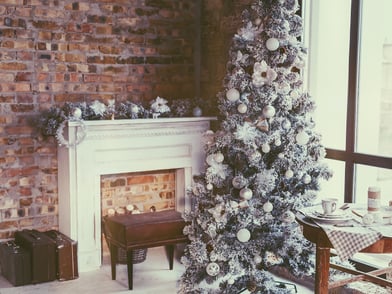 Leaks often go unnoticed until they’ve already caused significant moisture or water damage. For owners of historic brick homes, two areas are prone to water intrusion: roofs and damaged mortar. Understanding what to look for and addressing problems early can ensure your home stays dry this winter.
Leaks often go unnoticed until they’ve already caused significant moisture or water damage. For owners of historic brick homes, two areas are prone to water intrusion: roofs and damaged mortar. Understanding what to look for and addressing problems early can ensure your home stays dry this winter.
Proactive Roof Care for Historic Brick Homes
Age and weather can weaken your roof over time. Coupled with difficulty detecting problems from the ground, your historic brick home’s primary defense against the elements can quickly deteriorate. Issues like loose shingles, gaps or ice dams can escalate into water intrusion. If these leaks make their way into your interior, they can damage your ceiling, walls, and even the masonry work. You may see the damage show up as water spots or discoloration on the ceilings, brownish stripes down the walls and even wet baseboards or carpets. It is a good idea to check your attic regularly, as staining often shows up there first.
The best way to prevent roof problems is by routinely inspecting and quickly repairing shingles, flashing and underlay. Water damage and roof replacement are expensive problems, so early repairs are a must to keep costs down and your home safe.
Tuckpointing to Prevent Water Damage
Your historic brick plays a major role in preventing water infiltration. The brick and mortar is an efficient system that allows water to wick away and evaporate. However, mortar deteriorates over time, and cracks and gaps can develop, allowing water to seep inside. Tuckpointing is the traditional way to replace damaged mortar with a fresh mixture. This renews the seal between the bricks and allows it to function correctly.
Ensuring tuckpointing is completed now will prevent problems from worsening with the freeze-thaw cycle that is common in the D.C. area. Just like with the roof, a thorough inspection is the best way to identify mortar problems early. You will want to look for cracking or crumbling mortar, small gaps and cracks, and missing mortar or damaged bricks. If you already have leaks, you may see stained walls, bubbling paint, damp carpets and even mold or mildew. If you have not inspected your brick in a while, a professional inspection and traditional tuckpointing will ensure your interiors stay dry.
More Tips to Keep Moisture Out All Winter
In addition to addressing the roof and historic brick, there are a few other ways to keep moisture out of your home. First, clean your gutters to prevent ice dams, which can cause water to seep under your shingles. Clogged gutters also allow water to pool near your foundation, which can create moisture problems in the basement.
Next, trim back overhanging branches. During storms, branches can rub against the roof and damage the shingles or tiles in the process. They can also break during ice storms and high winds and cause significant damage to the roof and brick.
By taking proactive steps now, you’ll be prepared to handle D.C.’s winter weather while keeping your home warm, safe and dry.
If you'd like to have the condition of your brick expertly assessed, contact Renaissance Development to arrange a consultation. We are experts in traditional tuckpointing methods for historic brick homes in the DC area.
Tags:
Historic Brick Home DC, Roof Leaks in Historic Brick Home, Roof Leaks Old Brick Home, Roof Leaks, Roof of a Historic Brick Home, Roof of an Old Brick Home11/21/24 8:00 AM



